Getting ready to start our Four Pass Loop hike
The permit system for Maroon Bells Four Pass has changed. The loop is now divided into 6 zones, and you will need to apply a permit for each zone depending on where you plan to spend the night. You can apply for the permit here.
The only kind of multi-day backpacking that I consider getting off the couch for is the kind where I can have donkeys to carry my stuff. I’m a very lazy outdoorist all things considered. That’s why I wasn’t even sure that I wanted to backpack the Four Pass Loop in Maroon Bells wilderness until the very last minute. How last minute? Until we got the parking lot at 7am on Labor Day Weekend.
Other alternatives I was considering: doing the 26 miles loop one day (yes, that’s how much I don’t like backpacking), climbing one or more of the 14ers that’s in the area (Pyramid or the Maroon Bells).
All I knew was that I scored a hard-to-get parking permit for the trailhead and I wanted to use it. In addition, we have house sitters staying at our place so it wasn’t as if we could turn around go home.
I racked my brain for an excuse to bail but I came up empty. The weather was as perfect as it can be: temperature was in mid-60s with no storms in the forecast for the next 3 days. Jack who’s usually even less keen on this whole backpacking thing was actually eager to go. The fully-loaded pack didn’t even feel that heavy. A part of me felt like it was meant to be.
So off we went.
And you know what? We didn’t hate it. As of a matter of fact, on day 1, we walked 12 miles. We did about 11 miles the next day. Which left us with a mere 3.5 miles on our 3 day that we made a short work of.
By 10am on the 3rd day we were at Starbucks at Aspen enjoying our well-earned coffee and pastries.
The Logistics
Four Pass Loop is a 26 mile trail in Maroon Bells – Snowmass Wilderness which, as the name suggests, climbs over 4 different passes. If you hike clockwise – which is what we did – you’ll hit West Maroon Pass, Frigid Air Pass, Trail Rider Pass, and then Buckskin Pass in that order. They are all around 12500 ft in elevation.
No permit is needed to backpacking the Four Pass Loop. However if you’re starting in Aspen, reservation is required to access the trailhead. See below.
The most popular starting point of the 4 Pass Loop is the Maroon Snowmass Trailhead, 13 miles West of the town of Aspen, CO. Such is its popularity that they’ve implementing reservation system to access the trailhead. You can either park near the trailhead (you’ll need to reserve a parking permit) or take a shuttle from Aspen (you need to reserve it ahead of time). We were lucky to snag a 2 night/60 hr parking permit. This allowed us to do the 4 Pass Loop in 3 Day/2 Nights.
No reservation, no problem. There are other ways to access the loop (think of the 4 pass loop as a circle withs spokes coming out of it). Aspen is one of these spokes. Crested Butte is another one that’s also a popular starting point – the trailhead is called West Maroon Trailhead.
You can even start in Aspen and end in Crested Butte or vice versa (and take Dolly’s shuttle back to your car) if you’d like. Starting in Crested Butte has an advantage in that you don’t have to worry about getting a parking or shuttle reservation. Some even say that the scenery is better from that direction.
Bear canister is required. Wag-bags are highly recommended. This is a highly impacted area and you should try to pack out all human waste.
Even though technically you can camp anywhere within 100 ft from trail and water source, the Forest Service has kindly provided the coordinates of recommended campsites – flat area big enough for up to 5 tents – along the loop.
Backpacking Aspen’s Four Pass Loop in 3 Days, 2 Nights
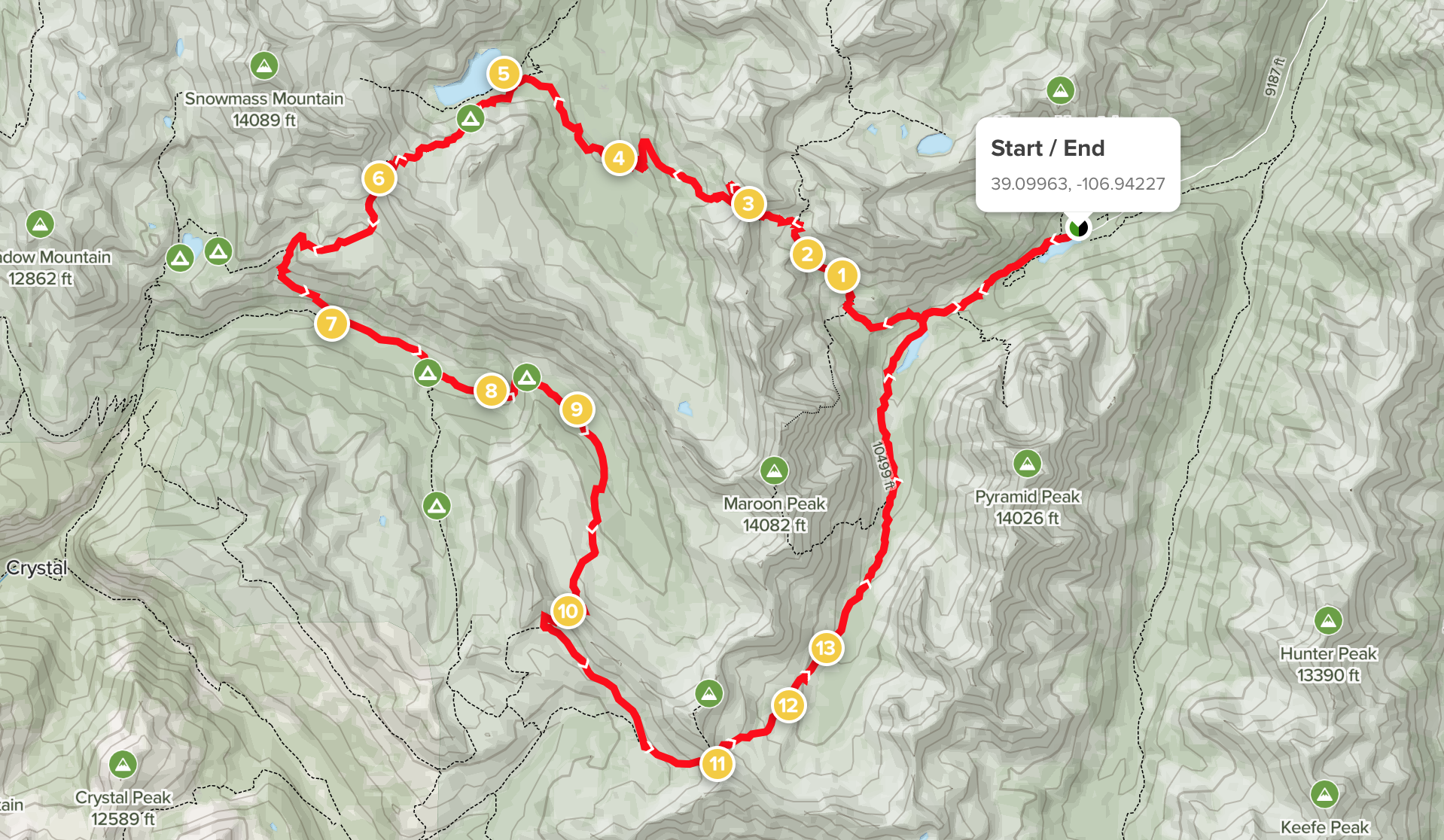
We went clockwise. #11: West Maroon Pass, #10: Frigid Air Pass, #9: Our campsite day 1, #6: Trail Rider, #4: Buckskin, #3: Our campsite day 2. Alltrail Map.
Day 1 (total miles: 12). Maroon Lake Trailhead – West Maroon Pass – Frigid Air Pass – Favre Basin
Crater Lake was the first landmark we came across. There wasn’t much water left at Crater Lake at that time of year. We walked among willows for seemingly a very long time until we turned around a bend and saw our first pass of the day: the West Maroon Pass. It took us 15 minutes to climb up the pass. The view was expansive. We conquered our first pass of the trip! High five and picture time.
One pass down, 3 to go.
Walking past Crater Lake
Coming up Maroon Pass
After some switchbacks down to a grassy valley, our path to Frigid Air Pass was very pretty and relatively easy.
Frigid Air Pass wasn’t bad at all maybe because I was distracted (read: freaked out) by the amount and size of insects we came across along the path. It was fascinating and downright terrifying. Some of these insects were the size of – I swear to God – those jumbo shrimps you see in supermarkets. They even looked like shrimps. These were black, jumping land shrimps that make a *thwack* sound when they hit and bounce off your legs. I’d never walked so fast as I did on this stretch.
Top of Frigid Air pass
We took a short snack break at the top of Frigid Air before the trail winds down to enter a spruce forest along Crystal River. This river valley is called Favre Basin.
We came across 2 rangers who wanted to know our plans for food storage and waste management. They were overjoyed we showed them our wag bags. I had never seen anyone get that excited over wag bags.
The Four Pass Loop is so popular that human waste (poop) has become a huge problem. Some people don’t bury them deep enough or at all. You’ll see toilet paper blooms all over camping areas. It’s sad and just plain gross. One of the rangers was carrying a trash bag filled with used toilet paper. If picking up other people’s poopy toiler paper were part of my job, I guess I’d be excited about wag bags too.
We decided to set up camp around 3pm because we found a good site close to water, with shades, level ground, and an established fire pit. So even though it was still relatively early and that we could push more, we decided to call it a day. We started a fire (allowed under 10800 ft) and had dinner of freeze-dried food (wow, freeze-dried technology has improved so much. It was rather tasty!)
2 passes down, 2 to go.
Day 2 (total miles: 11-ish). Fravert Basin – Trail Rider Pass – Buckskin Pass
I woke up feeling surprisingly fresh. I checked all the joints and muscles. All seemed to be in working order, warm and slightly sore but I was expecting much worse. Breakfast was homemade chocolate chip cookies.
Fravert Basin was to be honest rather boring. It was flat and there wasn’t much scenery to look at. We started early around 7am and we passed a lot of campers doing their morning routines in campsites nestled among the spruce. Surprisingly some camped right next to the trail despite signs (and common sense) that says you’re supposed to be 100 ft from trail or water.
The path to Trail Rider pass climbs over the low mountain range to our right. The trail crosses the river and starts switchbacking. It gets steeper and steeper, and soon we could see the river below us no more.
After the junction with Geneva Lake, the trail reaches a saddle with a small lake and Trail Rider Pass is finally visible. At this point we’re already exhausted from the climb. Seeing the pass in front of us, with quite a bit of more climbing to go was disheartening. Yikes.
We both agreed that Trail Rider was the hardest stretch in the whole section. I could tell we weren’t the only people struggling. We passed people resting with blank faces, some with tears in their eyes, wondering about their life choices. It was mind over matter at this point. Head down, focus on moving those feet one tiny step after another.
It was such a relief when we got to the top of the pass – it was around 11 am. We devoured our lunch while enjoying the view of Snowmass Lake below us.
Snowmass Lake
Filtering water at Snowmass Lake
It took us no time to reach Snowmass Lake. We took another break at the lake because it was so pretty. At this point, we were debating if we should camp by the lake. It was a nice area with plenty of campsites around and we were a little traumatized after the grueling climb up Trail Rider Pass.
On the other hand, there was something appealing about having a very short hike out on our last day. It was still early enough in the day we decided to put more miles in.
We shouldered our packs and headed out towards Buckskin Pass.
The hike up Buckskin Pass from Snowmass Lake was actually quite pleasant. The gradient was just right for me, enough to keep my heart rate elevated but not so steep that I had to pay attention to my steps. I zoned out. It wasn’t until we gained enough elevation that there was scenery to look at. At one point, I looked up and I could see Snowmass Lake and even Trail Rider Pass in the distance. Hard to fathom that we were at that pass just a few hours ago.
Maybe about 1 mile from the Buckskin Pass, our 4th and last pass on this trip, we passed a very nice camping area with a babbling creek and gorgeous view. Again, we were tempted to call it a day, but we pressed on.
Buckskin Pass
The view from Buckskin Pass was my favorite view of the whole Four Pass Loop. We could see Maroon Bells on one side and Snowmass Lake on the other. It was so pretty.
It was 4pm already and I was getting anxious to find a site, so we didn’t stay long. We half ran down the trail. We camped at the first site we found – a flat area among trees with a great view. There was already 2 guys making camp there, but the site was big enough for more tents and they invited us to pitch ours.
Our campsite on 2nd night. Not our tent though.
These older guys came all the way from South Carolina to backpack the Four Pass Loop. They weren’t the only out-of-state people we encountered on the trail. We met people from Missouri, New Mexico, and even Maine. It just goes to show how popular the trail is.
Dinner was again freeze dried food (Chana Masala).
Day 3 (total miles 3.5). Exit Maroon Lake TH
Oh boy we were so excited when we woke up that morning. No more mountain passes this day. The promise of real coffee and breakfast made us break down camp and pack in record time. We practically ran down the whole way to the parking lot. It was literally all downhill.
At the car we congratulated ourselves for completing the loop and NOT suffering too much. Then we headed to the closest Starbucks.
Walking out on Day 3. So very excited for proper coffee.
Here are some things that we did right on our Four Pass Loop backpacking trip
Most important of all, we were used to the elevation. It doesn’t mean we weren’t huffing and puffing, but we had no altitude sickness which we attributed to the fact we spent some time putzing around at high elevation.
We didn’t carry extra water around. Someone once says that if you have water around you, why would you carry it on your back? I took that advice to heart. We filtered and drank as much as we could when we found water and we carried a little with us in-between water stops. There were plenty of running streams even in September. The only part of the Four Pass Loop that was somewhat sparse on water is around Trailrider Pass. Fill up at Snowmass Lake (if going anti-clockwise) or at the no-name lake at the saddle before Trail Rider Pass if you’re going clockwise.
We shared gear. Between the 2 of us we only needed one small bear container, one water filter, one tent, and one Jetboil.
No extraneous gear. I saw a number of people carrying camp chairs (is this a thing now?). One person brought a bottle of whiskey (I’m all for a little flask of whiskey myself, but I’m talking about a full bottle of whiskey). Having said that, I wouldn’t dream of NOT bringing my Kindle along. So I kind of get it.
No extra clothes. Other than what I was wearing on the trail, I brought my trusty trio: Patagonia nano air hoody, a lightweight down jacket (Mountain Hardwear ghost whisperer), and a rain jacket. I slept in the same clothes I wear on the trail. A sleeping bag liner keeps my sleeping bag clean and adds a couple of degrees of warmth. A beanie, a neck gaiter, and a pair gloves provide warmth for little weight.
Our Packing List For Maroon Bells Four Pass Loop
- A 2-person tent: We have a 10 year old, Kelty tent. Nothing fancy.
- Sleeping bags and pads. I got a super cheap-o one from Amazon and it worked fine. But if I had to splurge, I’d get this Big Agnes one. It’s what Jack has, and tbh, it’s way comfier for 3x the price.
- Sleeping bag liner. I have an off brand one, and again it works just fine. But I have my eyes on this silk liner when/if I decide to upgrade.
- A Nalgene bottle with filter attachment (this one)
- Water purifying tablet. I use Aquatabs brand because it has no flavor. I’ve taken them on treks in Pakistan, Kyrgyzstan, and even when traveling to places with no potable water. I don’t like buying bottled water, and this, along with Epic Nalgene, has reduced my plastic consumption when traveling.
- Jetboil. Totally, undeniably, still the best purchase of our outdoor life. We got ours from REI garage sale 15 years ago for 25 bucks! And we use it so much.
- Freeze dried food. My thought on freeze-dried food: they taste so much better than I remember. Back in the days (lolz) the options were either Backpacker Pantry or Mountain House or make-your-own. But now there are endless brands and variety of cuisine. And plenty of vegetarian options too.
- Snacks for the road: I love Cliff Nut Butter, peanut M&M’s, and crackers and Baby Bell cheese for lunch.
- Oatmeal and cookies for breakfast.
- Wag bags. I don’t like pooping in a wagbag and carry my poop my around with me. It ‘feels’ gross. But you know what’s actually gross? Someone’s dirty toilet paper getting caught around your ankle while you’re eating dinner. Or finding someone’s soiled underwear (what’s wrong with people?!) Both happened on this trip. Ugh. Get yours here! The environment, and fellow hikers, will thank you.
- Headlamp: I love the rechargeable Petzl Actik
- Clothes: sunshirt (I love, LOVE, this Patagonia Cool Daily Hoody), hiking pants (Prana Halle), mid-layer, puffy, rain jacket, hat, bandanna, gloves, and beanies.
- Don’t forget your mineral sunscreen. This is the best one I’ve found so far.
- Bear canister. A small one will do. Rent one from REI.
How Difficult Was The Four Pass Loop?
I’d say it’s moderately difficult. We had a pretty active summer before our attempt: we hiked half a dozen of 14ers in addition to other outdoorsy fun in the mountains. We were also used to the elevation. Yet Trail Rider still felt hard.
On the other hand, there are people who run this 26 mile loop in one day. So it all depends on your fitness level. I always have the point of a view that all hikes are do-able, it’s just how much you enjoy the process.
We enjoyed it a lot. We got lucky with the weather. In addition, it was just the right length: 2 nights self-powered backpacking is a sweet spot for me. The gain and distance was challenging enough without being tear-inducing. Keep in mind that this is a popular trail so don’t expect solitude.
The views were worth the pain.
Highly recommend.
—
More to read: Climbing Mt. Sneffels, Ala Kul Trek in Kyrgystan, Completing the “W” in Patagonia.



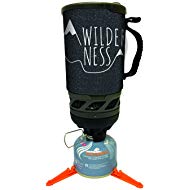
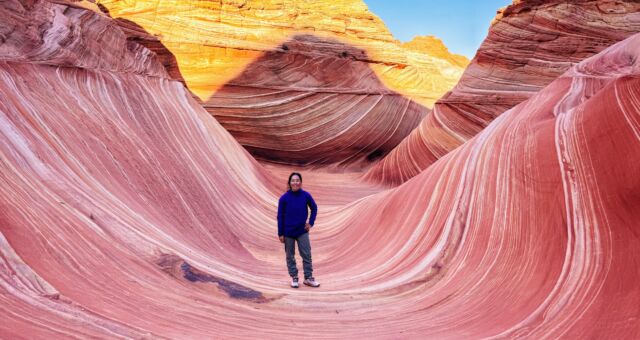
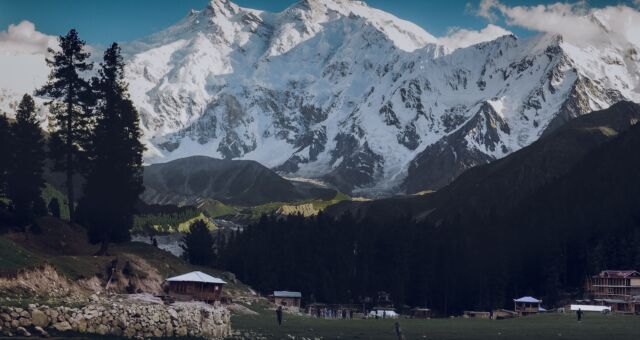
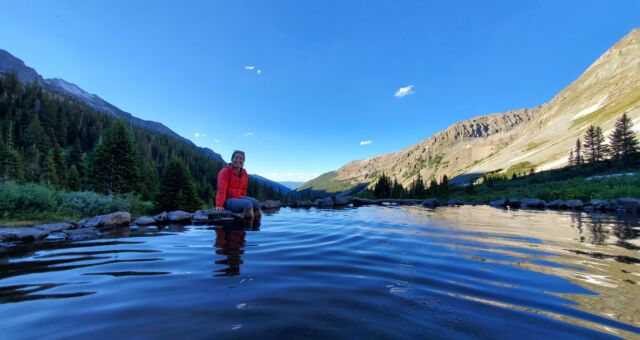
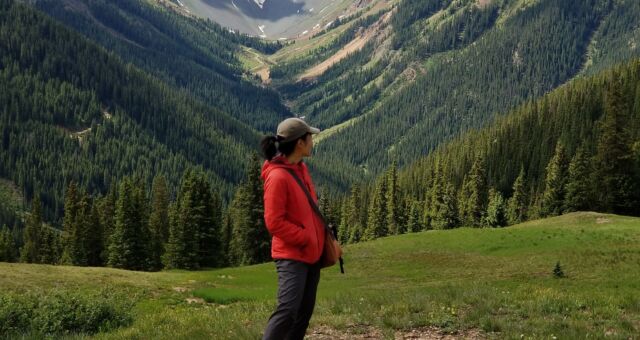
Questions and Comments
Comments are disabled. If you have any questions about the post, you can DM me on Instagram: @jacknjilltravel.